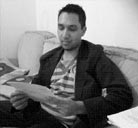Yet the speculation that Iran could achieve this feat, despite the fact that its "centrifuges appear to be breaking down at a faster rate than expected" according to US and European officials, is difficult to take seriously. Indeed, the notion that Iran currently has enough enriched uranium to make a nuclear bomb, promoted even by purported expert groups such as ISIS (and first hyped ininaccurate media reportingabout February 2009's IAEA report on Iran's nuclear programme) is simply a myth.
Debunking the myth,Physics Todayreported: "... as Chemist Cheryl Rofer points out, at 3.49%, the concentration of Iran's 1010 kg of enriched uranium-235 is still too low to make an atomic bomb and would have to be reprocessed for a number of months to reach the necessary enrichment level for military applications. The uranium enrichment facility would also have to be reconfigured to reach higher concentration levels of U-235. An atomic bomb requires highly enriched uranium-235 at greater than 90% concentration."
Given Iran's current technological capacity, there are no grounds to suspect that Iran can or will soon be able to develop a nuclear bomb. Indeed, all of Iran's low-enriched uranium (LEU) is safeguarded by the IAEA, subject to round-the-clock surveillance, and could not be further enriched to weapons-grade level without immediate detection.
This, in fact, was the actual conclusion of the IAEA's February 2009 report, which contrary to claims that Iran had deliberately underreported its uranium stocks found instead, according to IAEA spokeswomanMelissa Fleming, that there was "no reason at all to believe that the estimates of LEU produced in the (Natanz) facility were an intentional error by Iran. They are inherent in the early commissioning phases of such a facility when it is not known in advance how it will perform in practice." She added on fears that Iran could divert its uranium to other secret enrichment facilities: "No nuclear material could have been removed from the facility without the agency's knowledge since the facility is subject to video surveillance and the nuclear material has been kept under seal."
Thelatest IAEA reporthas also already been distorted beyond all proportion. In particular,much has been made about "alleged activities" with "possible military dimensions" relating to "the possible existence in Iran of past or current undisclosed activities related to the development of a nuclear payload for a missile." Yet there is no evidence at all that Iran is or has ever tried to develop a nuclear payload. These phrases are in fact references to the infamous "alleged studies" contained in a laptop obtained surreptitiously by US intelligence from unidentified sources. The "alleged studies" on the laptop constitute a bundle of supposed confidential Iranian documents related to nuclear work. Almost all detailed allegations about Iran's alleged nuclear weapons activities currently derive from these "alleged studies", attributed to Iran, but whose authenticity has never been proven. The IAEA has tended to approach the issue by referring to them in its reports and demanding that Iran provide information to disprove them - yet to date, the US government has refused to provide Iran copies of the "alleged studies" (which allegedly originated from Iran in the first place) so as to respond to them appropriately.
(Note: You can view every article as one long page if you sign up as an Advocate Member, or higher).





